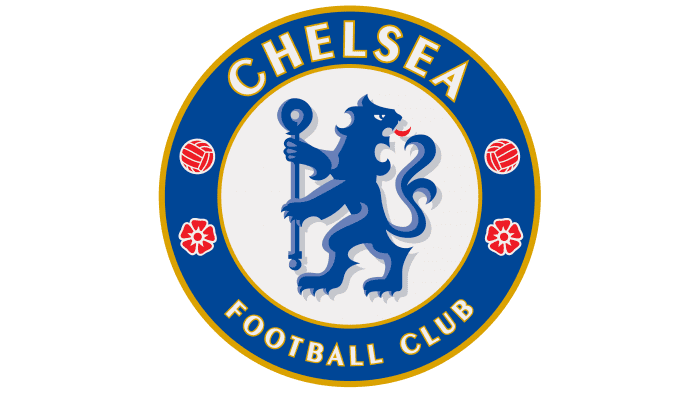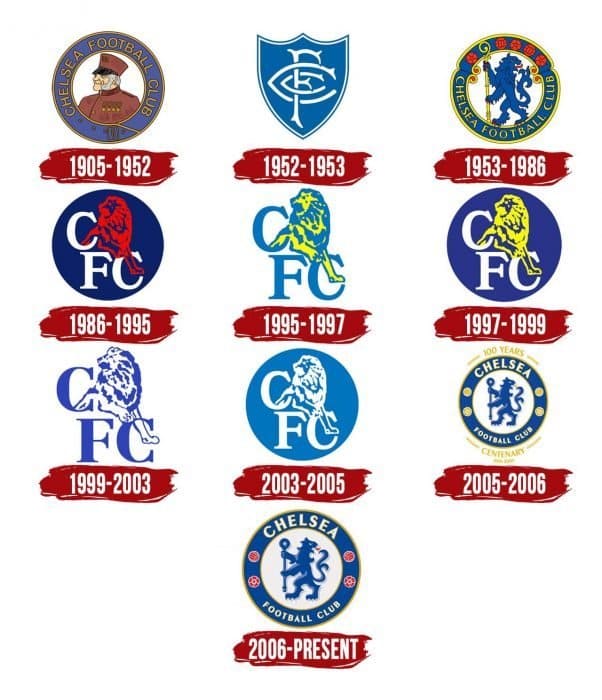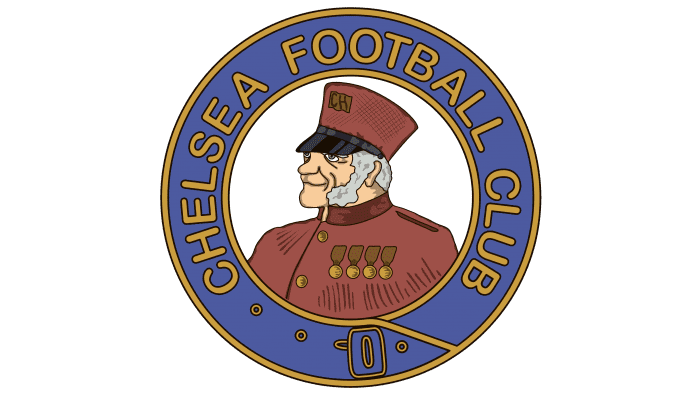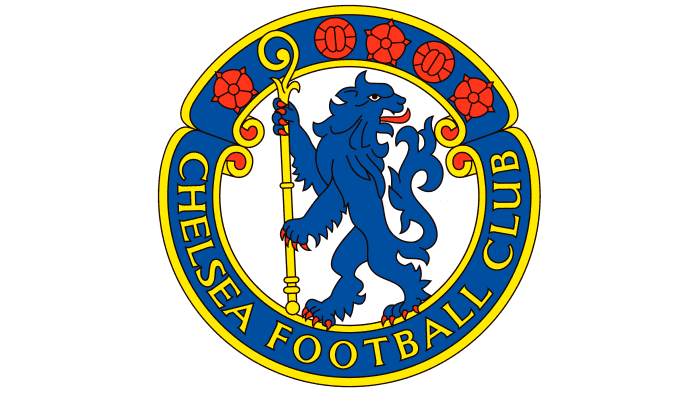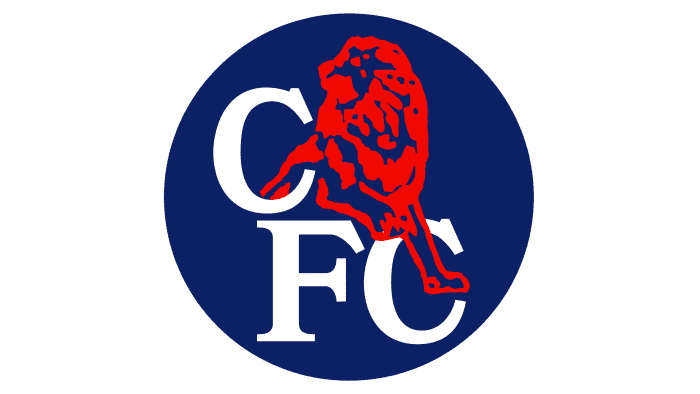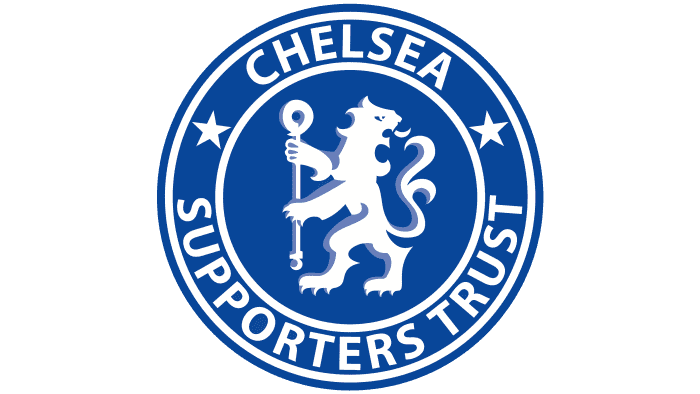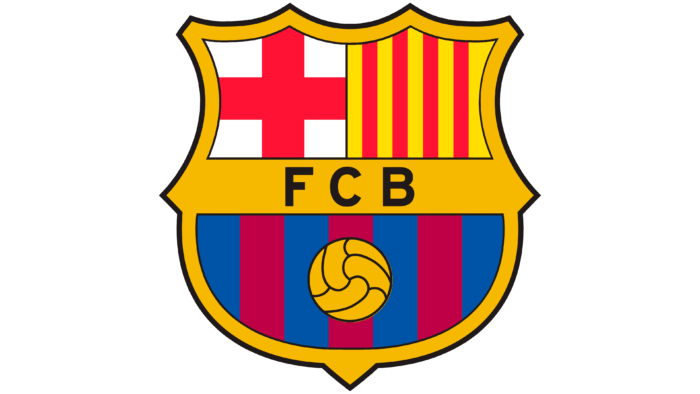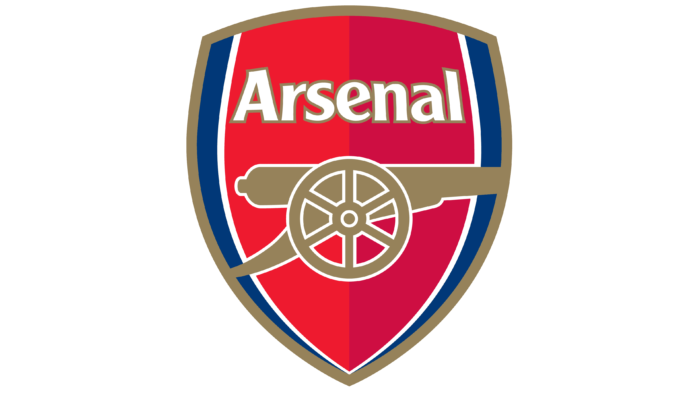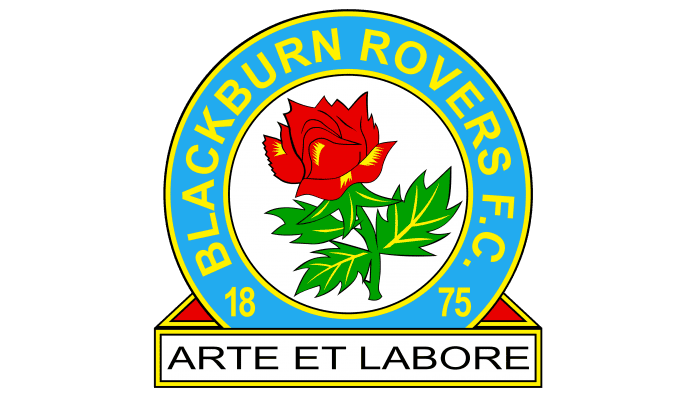The Chelsea logo is a tribute to the city’s glorious history, yet its modern design speaks to the football team’s aspiration for progress. An astounding blend of the present and the past merged into one emblem demonstrates a reimagining of traditions.
Chelsea: Brand overview
| Founded: | 10 March 1905 |
| Founder: | Todd Boehly, Clearlake Capital, Hansjörg Wyss, Mark Walter |
| Headquarters: | Fulham, London, England |
| Website: | chelseafc.com |
Chelsea was founded in 1905. The club’s first emblem was a collective image of British army veterans with medals on their chests. It was the logo of the Royal Hospital Chelsea. It wasn’t applied to the uniform but appeared in the first match programs. Thus, the club earned the nickname “The Pensioners.”
The fate of the club’s name was decided in 1905 at the “Butcher’s Hook” pub. There were other options, such as “Stamford Bridge,” later the name of the team’s stadium, “Kensington,” and “FC London.” Nevertheless, the leaders decided to keep the name of the London borough, home to Mark Twain and Oscar Wilde, where the club was based.
Meaning and History
Chelsea’s history is rich and extensive. Chelsea’s football remains at the world’s highest level, a fact known to all. The Chelsea logo is well-recognized in England and throughout Europe, as the club has numerous global-level awards. It is an integral part of the team.
Chelsea FC’s emblems have changed multiple times, adapting to fashion and fans’ tastes. Most of them feature a lion, a relatively recent idea introduced about half a century after the club’s founding.
By the mid-20th century, both the fans and the club’s leadership grew tired of the old nickname “The Pensioners.” In 1952, manager Ted Drake decided the emblem should be associated with the team’s new symbol – a blue lion. A year later, the famous blue lion appeared in a blue circle. Additionally, it was rendered in the club’s original royal blue color. The flowers depicted on the football club Chelsea logo and appropriate for the England national team’s emblem symbolize the country. The football represents the game. In the 1960s and 1970s, stars and cups were periodically added to the emblem after victories in the Country Cup (England).
What is Chelsea?
Chelsea is a football club located in West London. It is known for its victories in major European tournaments and successes in the Champions League. The club’s history began in 1905 when Gus Mears decided to use his stadium instead of renting it out.
1905 – 1952
The first logo depicted a man in military headgear with the inscription “CH.” His uniform is adorned with four medals. The image was borrowed from the coat of arms of the Royal Hospital Chelsea, where British army veterans were treated. The graphics are simple, with no details. The palette is blue and white.
Alongside the first emblem, its alternative version featured a military man inside a blue ring, stylized as a belt. The drawing is colored and contains the full name of the club: “Chelsea Football Club.”
1952 – 1953
In the mid-20th century, the team changed its old symbolism. Manager Ted Drake proposed a temporary solution pending the final logo. The intermediate version included a monogram of the letters “C,” “F,” and “C” against a blue shield with white outlines.
1953 – 1986
In 1953, the new emblem was finally completed. Standing on its hind legs, the blue lion was taken from the family crest of the then-club head, Earl Cadogan. The lion holds a staff – the same as the Westminster Abbot’s. Three red Lancaster roses symbolize England, and two footballs represent a dedication to football. The blue ring around the animal represents the Chelsea London borough’s coat of arms.
1986 – 1995
In 1986, the new team owner, Ken Bates, simplified and modernized the logo. A red lion is inside a blue circle with the white inscription “CFC.”
1995 – 1997
The circle on the emblem disappeared. Blue letters stand out brightly against a white background. The lion is yellow, with the same blue outlines.
1997 – 1999
The 1986 emblem returned. The only difference is that the lion is surrounded by yellow, not red, stripes.
1999 – 2003
Designers removed the circle from the emblem again. The lion became white and blue, with sharply defined shapes.
2003 – 2005
With Roman Abramovich’s arrival, the club returned to the 1986 logo, keeping the white lion. The primary color is close to blue.
2005 – 2006
The Chelsea Football Club celebrated its centenary with a new logo. It’s a modernized version of the club’s 1950s badge. It differs from the original in the arrangement of elements. Balls and flowers are placed on the sides, “Chelsea” at the top, inside the blue ring, and “Football Club” at the bottom. The inscription “100 Years Centenary 1905-2005” is golden in color. The lion figure is surrounded by shadows, creating a 3D effect.
2006 – today
The club retained the anniversary logo, removing only the inscription outside the ring. Footballs and roses are red, as in the 1953 emblem. The contours are golden-orange – darker than in the previous version.
Chelsea: Interesting Facts
Chelsea Football Club is a famous soccer team from West London with a lot of history and big wins.
- How It Started: Chelsea FC was created in 1905 at The Rising Sun, across from Stamford Bridge in London, which has been their home ever since.
- First Big Win: They won their first big trophy, the League Championship, in 1954-1955. Their coach, Ted Drake, improved the team and changed their old logo to the Chelsea lion we know today.
- Winning in Europe: Chelsea has won the UEFA Champions League, a big soccer competition in Europe, twice—in 2012 and 2021. The 2012 win was exciting because Chelsea won by penalty kicks against Bayern Munich.
- FA Cup Wins: Chelsea has won the FA Cup, another important competition, eight times. They first won it in 1970, and the latest was in 2018.
- Special Record: Chelsea is the only team from London to win the UEFA Champions League. They’ve also won every major European competition.
- New Owner: In 2003, a rich guy named Roman Abramovich bought Chelsea, making them one of the wealthiest teams. In 2022, an American named Todd Boehly and his group bought the club.
- Fans All Over: Chelsea has fans everywhere in the world, and clubs in many countries have shown their popularity.
- Famous Coaches: Some well-known coaches like José Mourinho and Carlo Ancelotti have managed Chelsea, leading them to many wins.
- Youth Team Success: Chelsea’s youth teams have won many competitions, and many young players have become stars for Chelsea and other teams.
- Stamford Bridge: Their stadium, Stamford Bridge, has been updated many times since it opened in 1877. It used to be one of the biggest stadiums, and it’s still known for its great atmosphere during games.
These points show how Chelsea FC has become one of the top soccer teams in the world, with great success in England and Europe.
Font and Colors
Creating a festive emblem to celebrate the team’s centenary birthed the current logo. However, the basis for both versions was the graphic sign from 1953-1986, which depicted the country’s, city’s, and local aristocrats’ main symbols.
The club’s classical visual style elements have been preserved to this day: a blue lion is taken from the Earl Cadogan family’s coat of arms, the same blue ring as on the Chelsea coat of arms, two red Lancaster roses symbolizing England, and staff reminiscent of the Westminster Abbot’s pastoral staff. The only “football” signs that still allow identifying the drawing as a sports organization’s emblem are two balls on the sides.
Chelsea FC logo designers used a sans-serif font similar to Peignot Bold for the inscriptions. This font was created in 1937 for the Deberny & Peignot foundry. Its author is the famous typographer, lithographer, and artist Adolphe Mouron Cassandre.
The color palette was chosen by specialists who managed to highlight the blue color and make it such that it didn’t interfere with the emblem’s visual perception. They combined the main colors with white, red, yellow-gold, and grey. Moreover, the image of the heraldic lion contains several shades, allowing the designers to achieve a subtle 3D effect.
Chelsea color codes
| Blue | Hex color: | #034694 |
|---|---|---|
| RGB: | 3 70 148 | |
| CMYK: | 100 83 10 1 | |
| Pantone: | PMS 7687 C |
| Red | Hex color: | #ee242c |
|---|---|---|
| RGB: | 238 36 44 | |
| CMYK: | 0 98 91 0 | |
| Pantone: | PMS 1788 C |
| Gold | Hex color: | #dba111 |
|---|---|---|
| RGB: | 219 161 17 | |
| CMYK: | 15 37 100 1 | |
| Pantone: | PMS 7555 C |
| Light Blue | Hex color: | #6a7ab5 |
|---|---|---|
| RGB: | 106 122 181 | |
| CMYK: | 64 51 4 0 | |
| Pantone: | PMS 2115 C |
| Gray | Hex color: | #d1d3d4 |
|---|---|---|
| RGB: | 209 211 212 | |
| CMYK: | 17 12 12 0 | |
| Pantone: | PMS 427 C |
